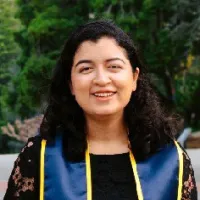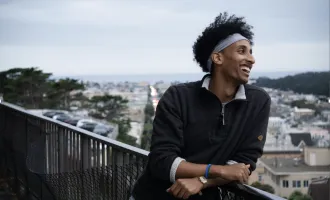
Shadowing a Healing Symphony
Surgery — one of the three primary treatment options for cancer, alongside radiation and chemotherapy — had always been a theoretical concept for me, something I had only watched in videos or learned about in papers.
That changed during my gap year as a post-bac intern at the UCSF Breast Care Center, when I was presented with an opportunity to facilitate tissue collection for a research study. In addition to collecting tissue, I would also be able to shadow a surgery, specifically a mastectomy.
The surgery was scheduled for 7 in the morning, so I woke up at 4 am, the sun still hidden due to daylight savings. I put on hospital scrubs for the very first time, albeit struggling to gauge the right size. Feeling a bit more special and important—the scrubs were that transformative — I set out to find the operating room (OR).
I was confident in my navigation skills, having spent four undergraduate years navigating the large maze-like lecture halls at Berkeley. But this confidence wavered as I entered the hallways leading to the adult hospital, where all the operating rooms were located.
I recalled the walkthrough another intern had given me, yet my uncertainty persisted. Was I on the right path? Did I have all the required protective equipment? Was there another way to enter the OR? How could I avoid making it obvious that I was confused and lost?
Embracing the last question, I approached a custodial staff member and confessed that I had lost my way to the specific OR number. Fortunately for their guidance, I made it to the correct OR in time.
As I entered the room, I noticed the lead surgeon hadn't arrived yet. The anesthesiologist was busy intubating the patient, and the scrub nurse was making final preparations. In addition to the scrub nurse and the anesthesiologist, there was a charge nurse and a resident present.
The surgeon soon arrived, engaging the scrub nurse in a casual conversation about a recent family trip to the East Bay. My nervousness eased as I saw the relaxed yet professional camaraderie among the team, realizing that all the clinicians were just people too.
"Okay, let's time out," the surgeon said, a new term for me. Each member of the OR team introduced themselves and reviewed the patient’s information and the procedure together. As the surgery began, I stood near the doors of the OR, poised to step out if needed but close enough to witness the operation.
The surgeon first removed the lymph node, a grainy mass meant to check if the cancer had spread. A while later, she proceeded to excise the tumor from the patient’s breast — a whole, bloody mass that appeared far more ominous than its textbook illustrations.
Standing there quietly, I noticed that it was a harmony of sorts—not only in the surgeon's hands but also in the operating room. The surgeon swiftly switched instruments: the scalpel, the suction tube, the forceps, and many other devices whose names I did not know. Yet, these tools all worked synergistically to remove the tumor while ensuring minimal impact on the rest of the patient’s body.
The operating room dynamics paralleled this design—the surgeon, scrub nurse, charge nurse, circulating nurses, resident, and anesthesiologist all worked together synergistically.
Each member, with their unique expertise and diversity, strengthened the team, leading to better outcomes. The anesthesiologist monitored the patient's vitals, adjusting anesthesia levels with precision, while the scrub nurse actively assisted the surgeon during the surgery.
The charge nurse moderated the OR environment, coordinating any necessary resources, and the resident worked alongside the lead surgeon, further developing their skills.
The collaboration extended beyond the medical staff alone. The custodial staff who guided me to the correct OR, the administrative team who scheduled the surgery, and the lab technicians awaiting the tissue samples all contributed to this symphony.
The surgery concluded with the breast surgeon handing me the core biopsies in a sterile container, which I placed in a biohazard bag for delivery to the research lab. The plastic surgeon then took over for breast reconstruction, and the OR crew continued their work.
As I exited the OR, tissue sample in hand, my own body sent me a signal — I was hungry. Yet despite the hunger, my heart felt full, hoping that I’d be able to add a note to this composition someday.



